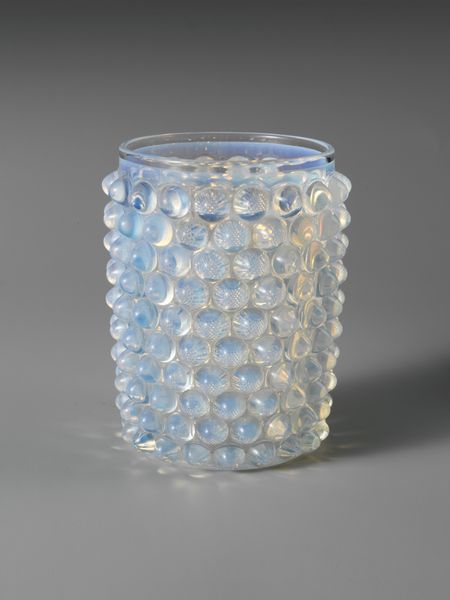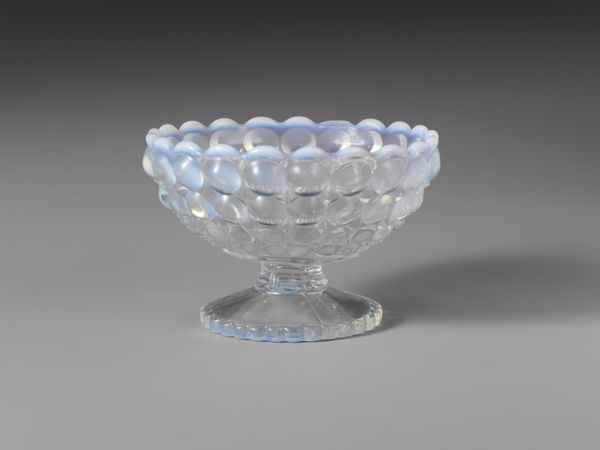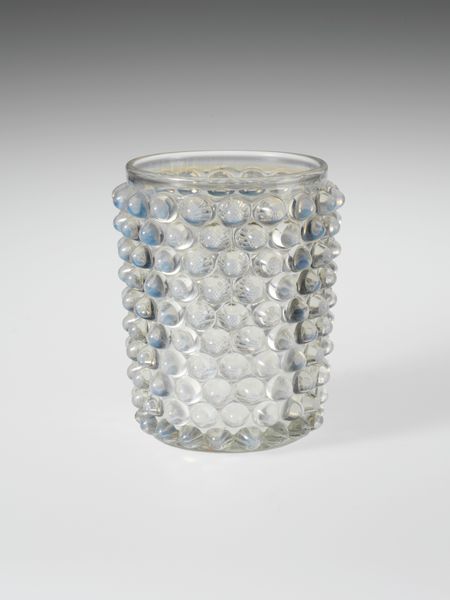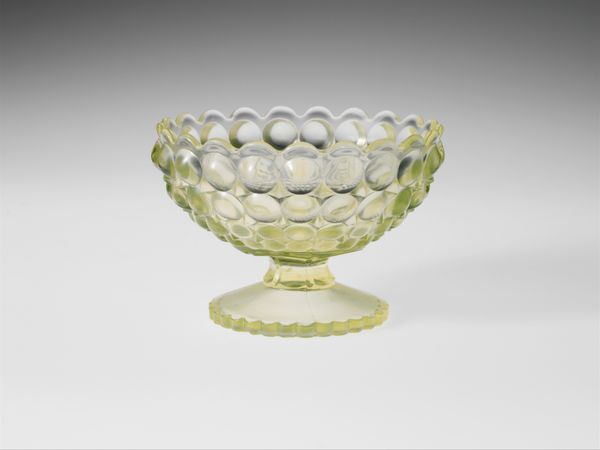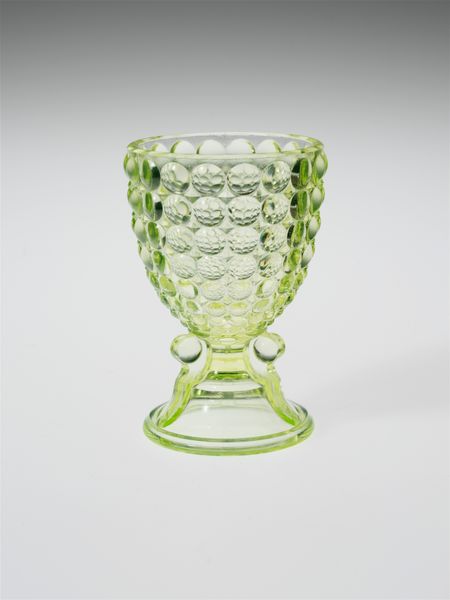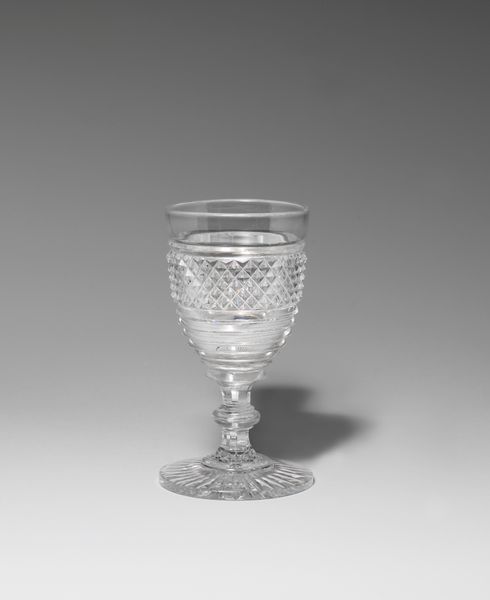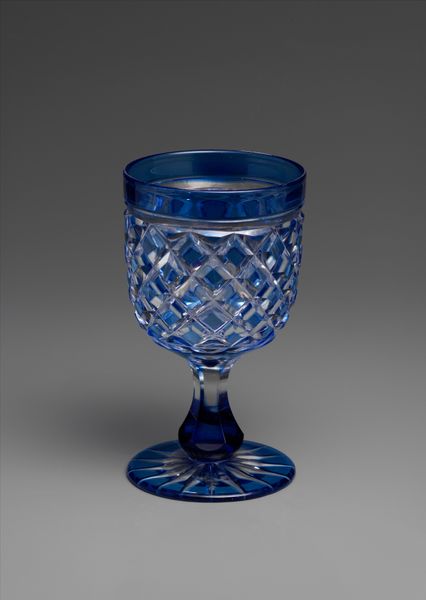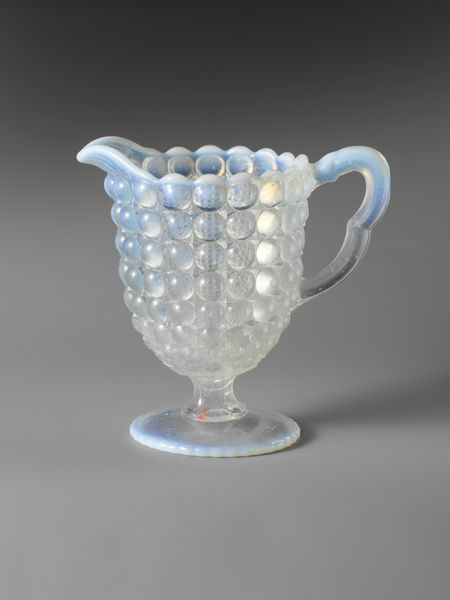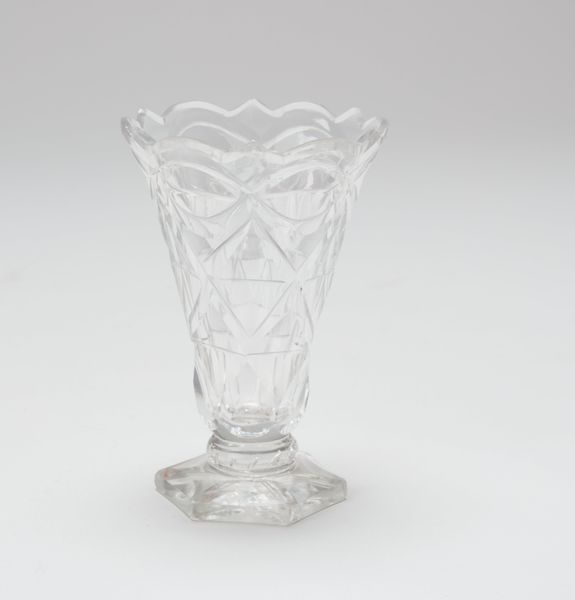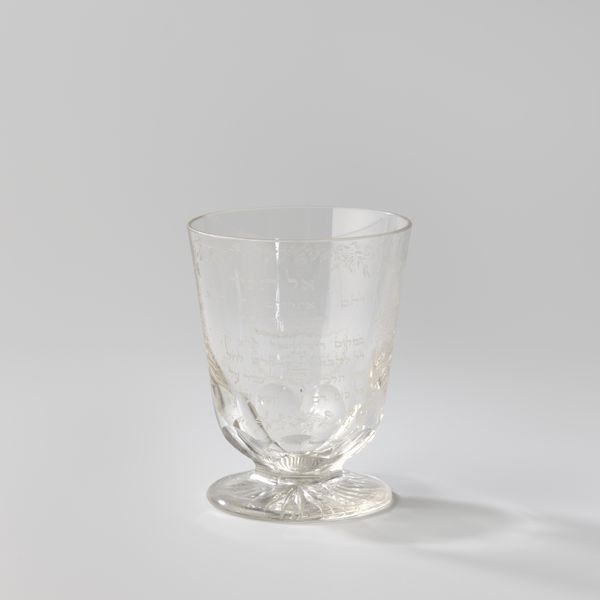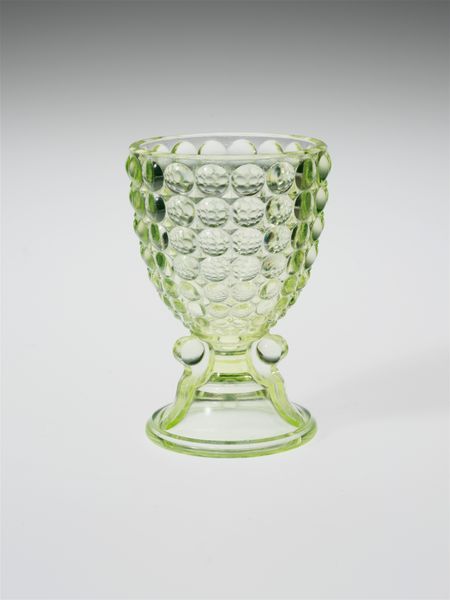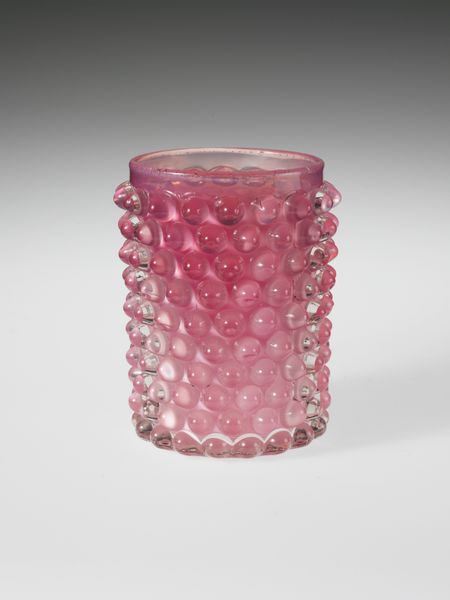
glass
#
glass
#
united-states
#
decorative-art
Dimensions: H. 7 1/2 in. (19.1 cm); Diam. 4 3/16 in. (10.6 cm)
Copyright: Public Domain
This “celery vase” was made in Pennsylvania by Richards and Hartley Flint Glass Company sometime between 1867 and 1890. Although it’s called a vase, it wouldn’t have been used for flowers. Instead, it was designed to hold celery stalks, a fashionable addition to the Victorian table. It's made of pressed glass, a technique developed in the 19th century, which mechanized production. The molten glass would have been forced into a mold with a repeating pattern on its surface. This one has what’s known as a hobnail pattern. These small raised bumps create a tactile surface, almost like rows of tiny bubbles. Pressed glass democratized access to decorative objects. What had previously been luxury items, made individually by skilled glassblowers, could now be mass-produced, using the division of labor. This vase is a good reminder that craft and design have always been deeply entwined with industry.
Comments
No comments
Be the first to comment and join the conversation on the ultimate creative platform.

